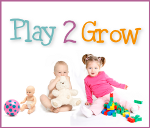Some of the issues surrounding excellence in Australia are the new standards they have put into place. One of them is
national
Curriculum framework.One issue this framework focuses on is the importance of play. Educators must promote learning through play. Activities must be child oriented and initiated, but there is still intentional teaching.
Australia now has something called universal access which states that all children must have fifteen hours of preschool per week. My contact told me it used to be ten hours.
Australia's government has implemented National Quality Standards which are divided into seven areas that contribute to the quality of early childhood education and care. These areas have been identified by research and are:
1.Educational program and practice
2.Children’s health and safety
3.Physical environment
4.Staffing arrangements (including the number of staff looking after children)
5.Relationships with children
6.Collaborative partnerships with families and communities
7.Leadership and service management
This means that for the first time there will be consistency all across Australia in the Early Childhood sector.
Many of the issues of inequity in Australia are similar to the US. For example, there is the issue of low wages for early childhood educators and a high turn over rate. An article called, Crisis in Childcare Industry explains the situation. “Attending Saturday's crisis summit, Ballina Childcare worker Lisa Cheal said she can barely afford to pay her own car rego, but still buys supplies for the young children in her care. "I live week by week on the wages of a childcare worker," she said. Ms Cheal estimates she's spent $850 out of her own pocket this year for basic supplies such as craft materials, books and cushions for her young class and most childcare workers do the same. "I've been working with children for 15 years, and my family is always telling me to leave," Ms Cheal said. "They can't understand why I stay. I'm studying for my early childhood teaching degree, and if I did leave for a primary school I'd get $60,000 - but I love the infants,” she said. "It's a constant emotional battle.””
Click here to read more.
There is also an achievement gap between students from higher and lower income families.
This article, written in 2007 describes the achievement gap and the reasons behind it. Australia has made some changes in their educational system since this article was written. With their recent implementation of quality standards across Australia, the achievement gap may decrease.
In the UK, there is an organization called the
British Association for Early Childhood Education which is similar to NAEYC. Participation with them is voluntary, but they provide support, advice and information on best practice for everyone concerned with the education and care of young children. This organization represents England, Scotland, Whales and Northern Ireland.
One project I learned about which helps one disadvantaged group in Northern Ireland is
The Toy Box Project which helps The Travellers. They are one of the most disadvantaged groups in Northern Ireland. “Travellers are a distinct ethnic group within Irish society. Their lifestyle and culture, based on a nomadic tradition, sets them apart from the settled population.” A support worker goes to travellers homes with a toy box full of toys, art supplies, books and natural materials. The support worker encourages children to learn through play, builds positive relationships with each family, supports parents in enrolling their children in preschool and helps parents build confidence to engage positively with preschools to support their child’s education. This project was created to reduce inequality and to increase enrolment in early childhood programs and primary school.
![]()
![]()
![]()
![]()
![]()
![]()
![]()
![]()
![]()
![]()
![]()
![]()
![]()




